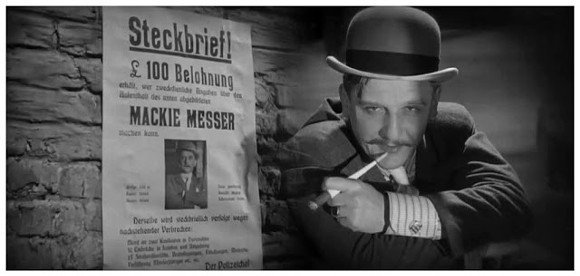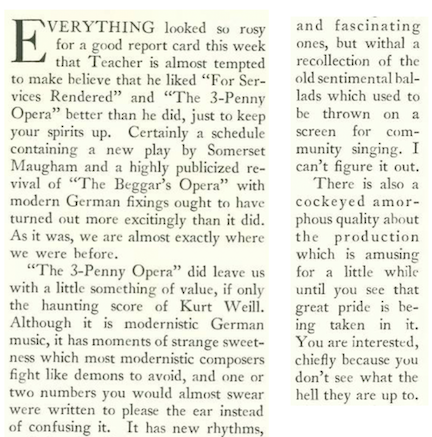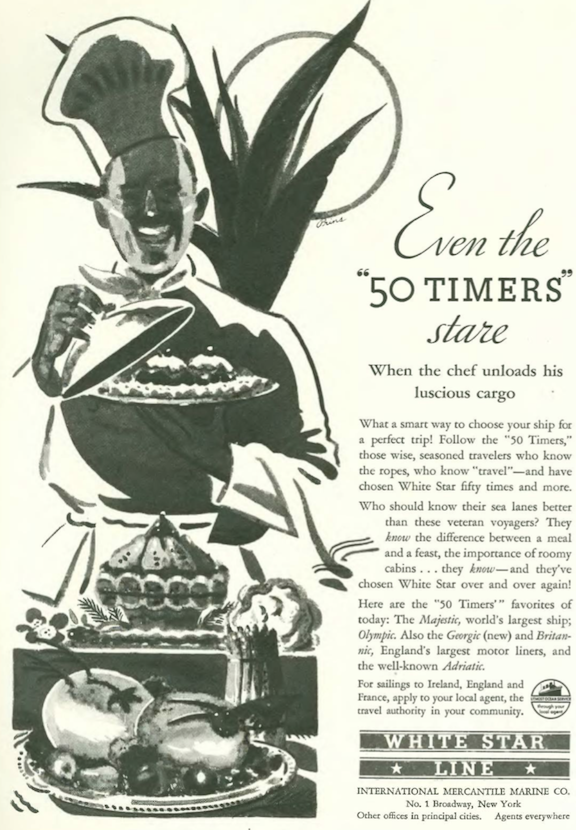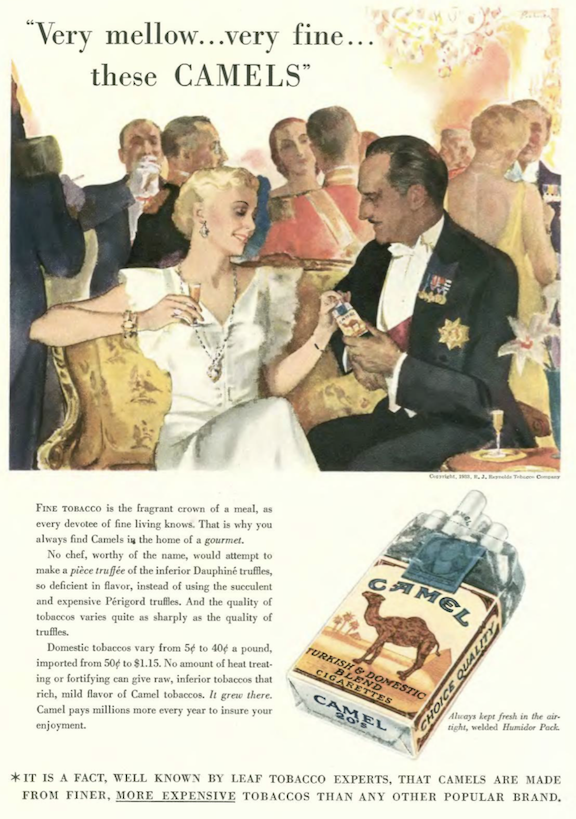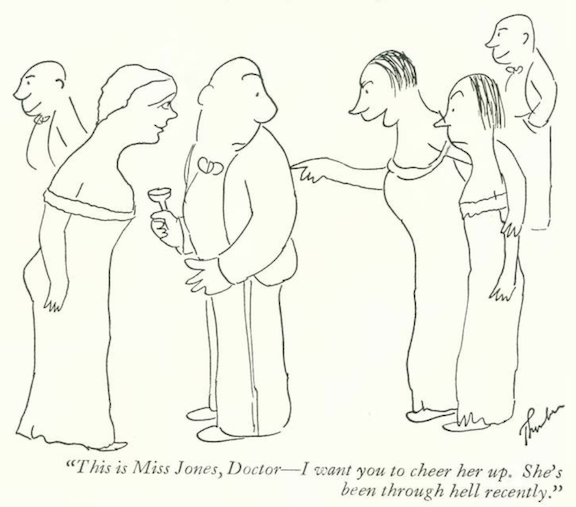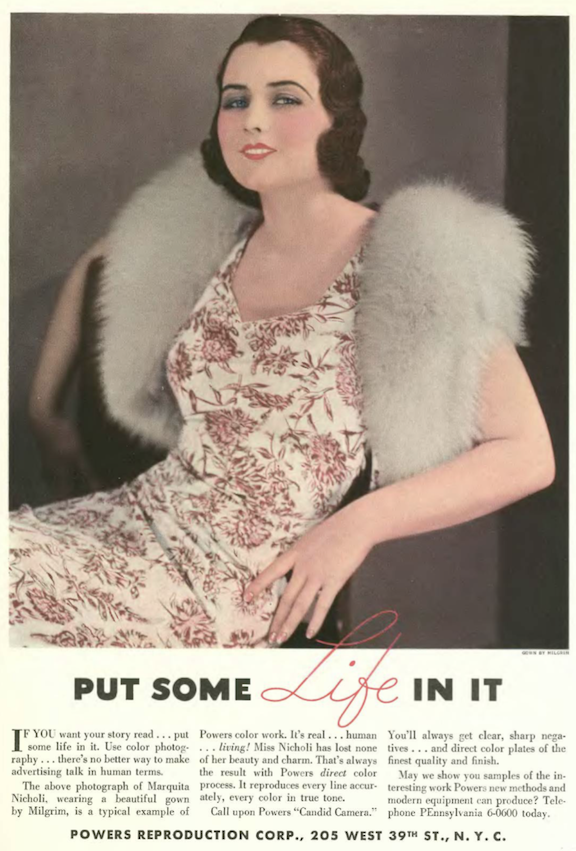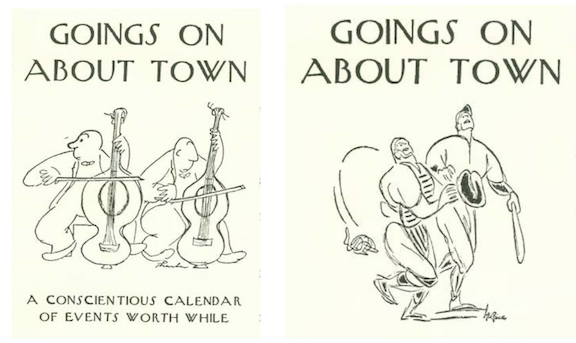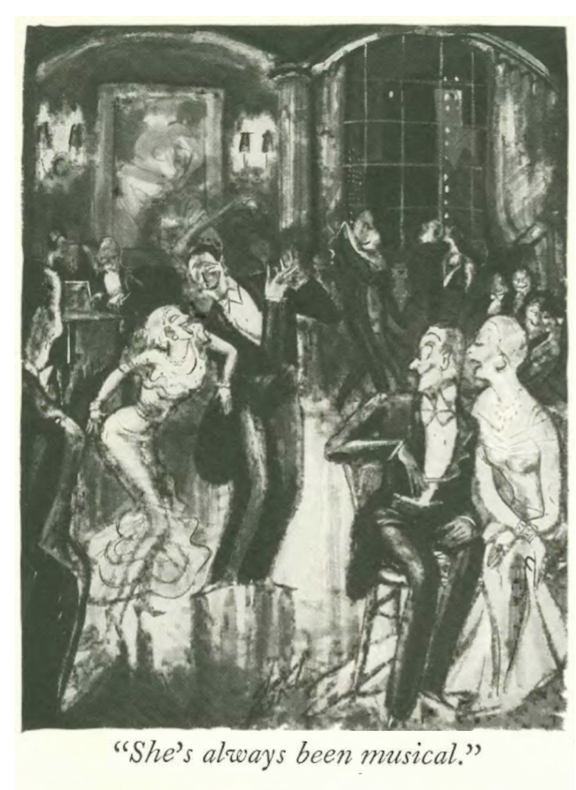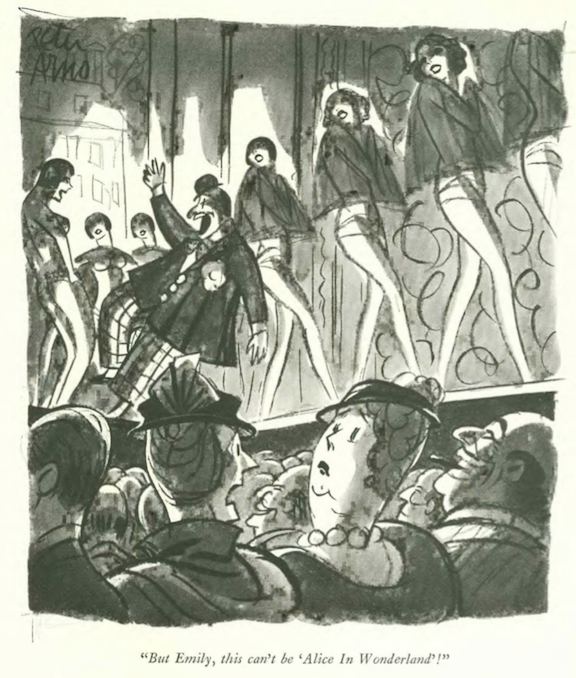First performed in Berlin in 1928, The Threepenny Opera was Bertolt Brecht’s socialist critique of capitalist society and was a favorite (somewhat ironically) of that city’s bourgeois “smart set.” However when it landed on the Broadway stage in 1933, it famously flopped, and closed after just twelve performances.

The first American production, adapted by Jerrold Krimsky and Gifford Cochran, opened April 13, 1933, at the Empire Theatre, featuring Robert Chisholm as Macheath (“Mack the Knife”) and Steffi Duna as his lover, Polly. Critic Robert Benchley found value in the play’s “modernistic” music, but seemed puzzled by its enigmatic production, an opinion shared by other contemporary critics.

Some critics today defend the 1933 American production, noting that the Krimsky–Cochran adaptation was quite faithful to the Brecht original. Perhaps something was lost in translation, or maybe the world in which the play was conceived no longer held much relevance to Depression-era Americans.

Benchley half-heartedly concluded that the play was probably worth seeing, for no other reason than to experience something different for a change.
By 1933 the world that had conceived The Threepenny Opera was long gone—Brecht fled Nazi Germany two months before his play opened in New York, fearing persecution for his socialist leanings. Things were quickly going “from bad to worse” under Adolf Hitler’s new regime, as Howard Brubaker observed in his “Of All Things” column:
* * *
Look Ma, No Net!
Karl Wallenda (referred to as “Carl” here) was born to an old circus family in Germany in 1905, and by 1922 he would put together a family-style high-wire act (with brother Herman) that would come to be known as “The Flying Wallendas.” They debuted at Madison Square Garden in 1928, notably without their safety net, which had been lost in transit. So they performed without it, much to the acclaim of the adoring crowd. They soon became known for their daring high-wire acts, often performed without safety nets. E.B. White filed this (excerpted) report for “The Talk of the Town.”
In the years that followed Karl developed some of troops’ most startling acts, including the famed seven-person chair pyramid. They performed this incredibly dangerous stunt until their appearance at the Detroit Shrine Circus in January 1962; the wire’s front man, Dieter Schepp, faltered, causing the pyramid to collapse. Schepp, who was Karl’s nephew, was killed, as was Richard Faughnan, Karl’s son-in-law. Karl injured his pelvis, and his adopted son, Mario, was paralyzed from the waist down.
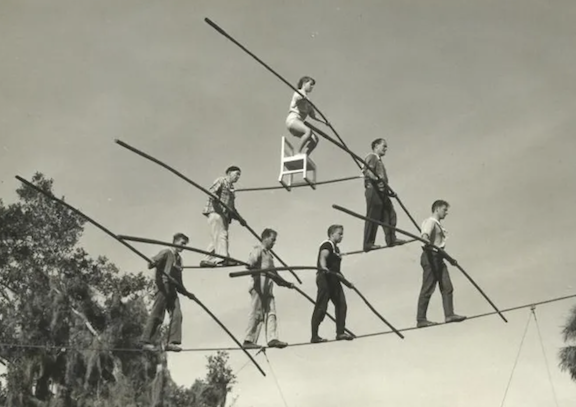
Karl’s own luck finally ran out on March 22, 1978, on a tightrope between the towers of Condado Plaza Hotel in San Juan, Puerto Rico. High winds, and an improperly secured wire, caused the 73-year-old Wallenda to wobble, and then fall, one hundred feet to the ground. He was dead on arrival at a local hospital.

* * *
Safer Entertainments
Lois Long continued to file nightlife reports in her “Tables for Two” column, reveling in the sights and sounds (and rhythms) of the Cotton Club’s orchestra, led by Duke Ellington…but the real attraction was Ellington’s unnamed drummer, whom I assume was the great Sonny Greer…
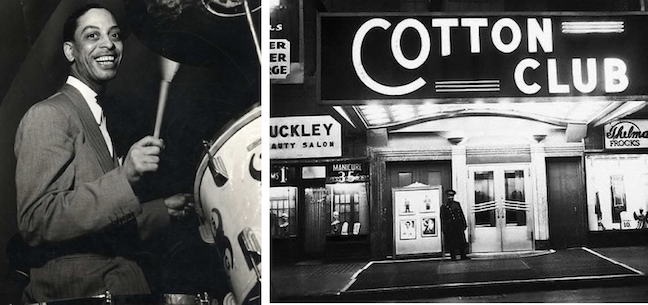
* * *
From Our Advertisers
Given the news Howard Brubaker shared earlier in this post, I wouldn’t use the word Gemütlichkeit (basically, warmth and friendliness) to describe the state of things in Nazi Germany…
…a better option would be a trip to the British Isles or France on the White Star lines, nicht wahr?…
…RCA’s mascot, Nipper, appeared to contemplating fatherhood in this two-page ad for the company’s new “baby sets”…
…Camel took a break from its magician-themed “It’s Fun to be Fooled” ads to run another elegant Ray Prohaska-illustrated spot…
…on to our cartoons, Carl Rose demonstrated the economic benefits of legal beer…
…E. Simms Campbell showed us a woman seeking a bit of motherly wisdom…
…Whitney Darrow Jr (1909–1999), who began his 50-year career at The New Yorker on March 18, 1933, offered this look at childhood’s hard knocks…
…James Thurber drew up an odd encounter at a cocktail party…
…Peter Arno served up a proud patriarch…
…and William Steig explored the perils of somnambulism…
…on to our April 29, 1933 issue with a cover by Garrett Price…although we’ve already seen many cartoons by Price, we haven’t seen many covers (he did two covers in the magazine’s first year, 1925). Price would ultimately produce 100 covers for The New Yorker, in addition to his hundreds of cartoons…
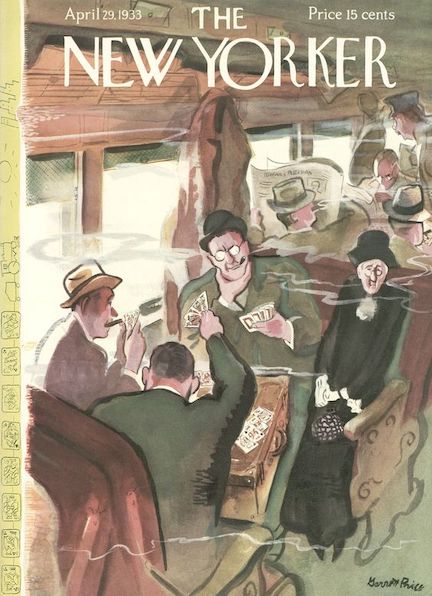
…for the record, here is Price’s first New Yorker cover from Aug. 1, 1925…
…there was more troubling news from Nazi Germany, this time from Paris correspondent Janet Flanner in her “Letter from Paris” column…Flanner would later gain wider fame as a war correspondent…

* * *
From Our Advertisers
Camel followed up its elegant ad from the previous issue with another “Fun to be Fooled” spot, this time presented as a multi-panel comic strip…
…Powers Reproduction was a frequent advertiser in the early New Yorker, touting the “realism” of their color photography, but in this case the model looked more like a department store mannequin…
…Otto Soglow continued to ply a lucrative sideline illustrating ads for Sanka decaf…
…as we segue to our cartoonists, the opening section featuring work by both James Thurber and George Price…
…Gardner Rea’s snake charmer expressed her belief that all men are created equal…
…here is a cartoon by a new artist, Howard Baer, who contributed to The New Yorker between 1933 and 1937…
…and another by newcomers Whitney Darrow Jr. …
…and E. Simms Campbell…
…Barbara Shermund continued to rollick with her modern women…
…and we end with the ever-reliable Peter Arno…
Before we close I want to remember Roger Angell, who died last week at age 101. A literary legend and a great baseball writer to be sure, but also one of the last living links to the first days of The New Yorker. Rest in Peace.
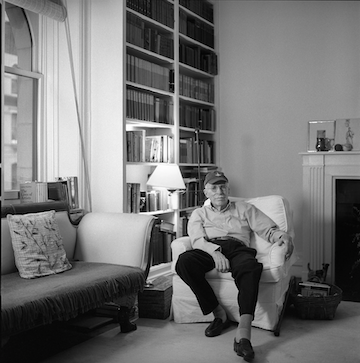
Next Time: Bohemian Rhapsody…
